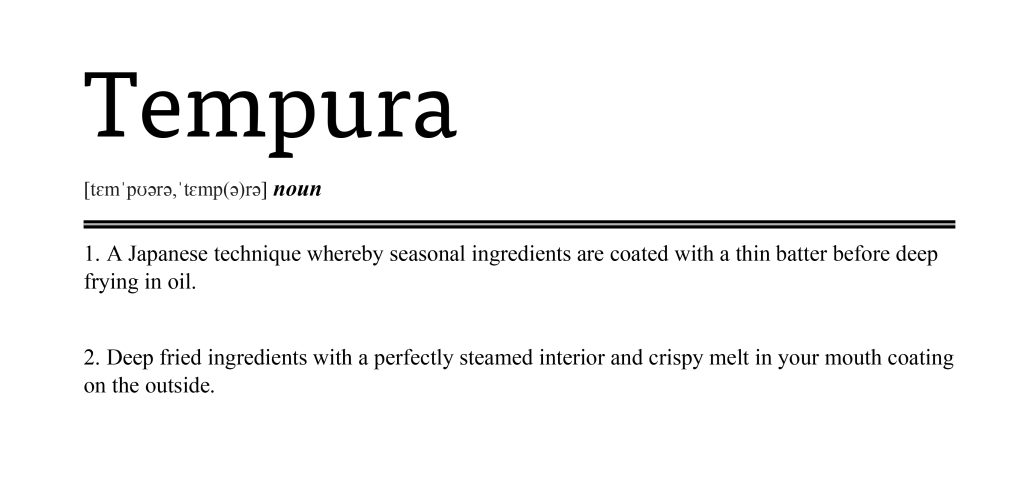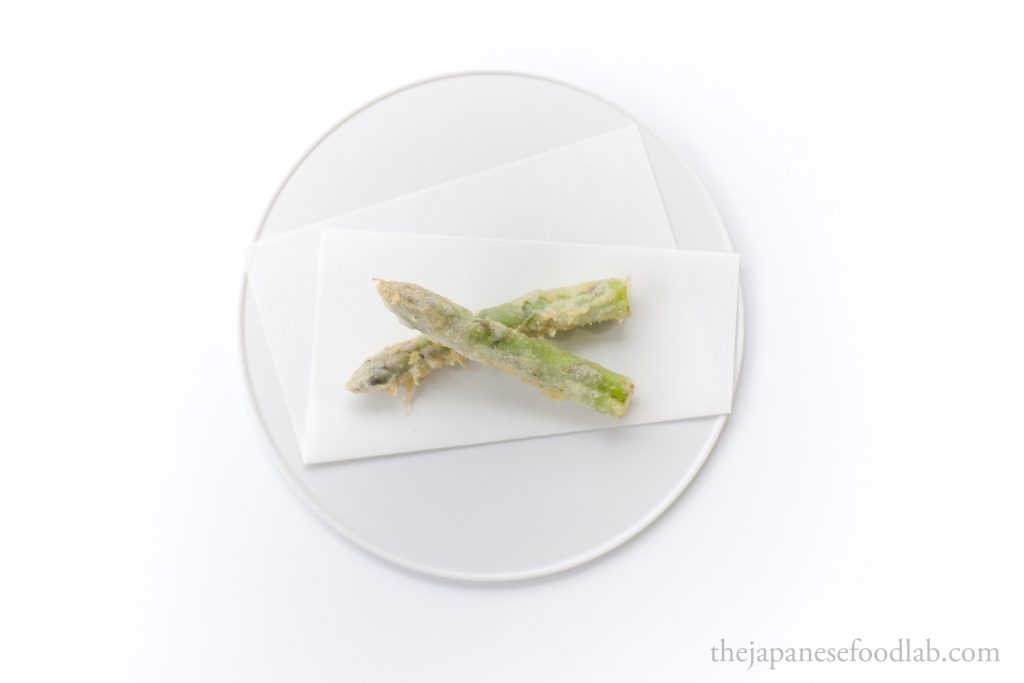This article is part one in our tempura series.

Brought to Japan by the Portuguese in the 16th century, modern day Japanese tempura is characterized as food deep fried in a light and airy batter that is crispy at the first bite, before melting into your mouth. Tempura batter consists of only three simple ingredients: water, egg and flour. It is famously thin compared to other deep frying coatings found outside of Japan such as beer batters or breadcrumb coatings. This not only gives it its unique textual characteristics, but also places emphasis on the taste of the ingredients themselves over the batter.
This emphasis can be seen through what is defined as the perfect tempura, whereby the ingredients are steamed to perfection on the inside with a perfectly crispy coating on the outside. The hot oil heats up the juices inside the vegetables and meats until they evaporate as steam, concentrating and accentuating their flavor.
The ingredients used in tempura are usually various vegetables at the peak of their season as well as fresh seafood and white flesh fish (Shiromi/白身). Red meat in the form of beef or chicken thighs are typically not prepared as tempura due to their heavy taste, though it is sometimes possible to find pork and chicken breast used. The focus of the batter, known as the clothes in Japanese (天ぷら衣), is to achieve a delicately crispy texture, instead of one that is brittle and crunchy.

Ingredients prepared as tempura can be found throughout the various levels of Japanese dining, from your high turnover train station franchise, as a side dish for udon or soba, all the way to specialist counter seat restaurant establishments that serve only a handful of customers a day. However, regardless of where you eat tempura, they’re typically associated with various stereotypes:
- The batter is mixed as lightly as possible, typically with chopsticks
- A fresh batch of oil is used for deep frying to maintain quality
- The ingredients are fried quickly at a high temperature and immediately served to the customers
Throughout the next few articles, we’ll tease apart the assumptions listed above that are not necessarily incorrect, but have a more nuanced explanation behind them. We’ll also explore in minute detail the various aspects that go into making high quality tempura.